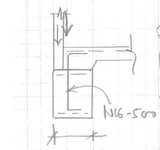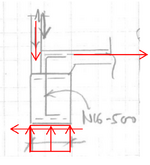Hi,
I’m working on a warehouse project in Australia involving a pad footing that supports precast concrete panels located on the site boundary. Since the panel is positioned right on the boundary, the footing is highly eccentric, resulting in bearing pressures that exceed the allowable limits.
I was given an example from a previous project by another engineer facing a similar situation. From the calculations, the bearing pressure reached 380 kPa, which is above the allowable limit of 250 kPa. Then the engineer simply added a note stating: “Provide N16-500 tie bars to the slab on ground.”

Apparently a lot of warehouses with eccentric pads like this have been built. I’m trying to understand how the tie bars helps here. Could someone please explain? Some detailed calcs will be really helpful. Thanks in advance.
I’m working on a warehouse project in Australia involving a pad footing that supports precast concrete panels located on the site boundary. Since the panel is positioned right on the boundary, the footing is highly eccentric, resulting in bearing pressures that exceed the allowable limits.
I was given an example from a previous project by another engineer facing a similar situation. From the calculations, the bearing pressure reached 380 kPa, which is above the allowable limit of 250 kPa. Then the engineer simply added a note stating: “Provide N16-500 tie bars to the slab on ground.”

Apparently a lot of warehouses with eccentric pads like this have been built. I’m trying to understand how the tie bars helps here. Could someone please explain? Some detailed calcs will be really helpful. Thanks in advance.

